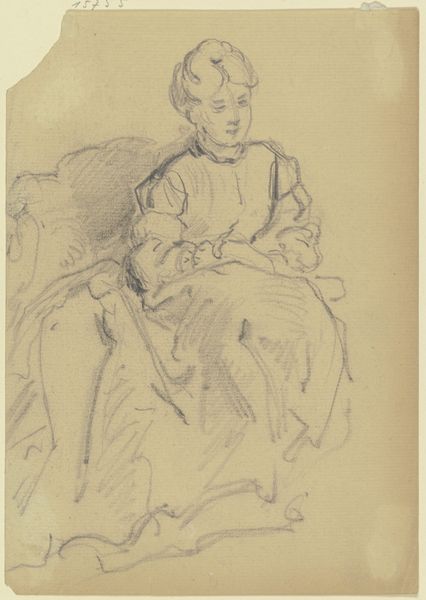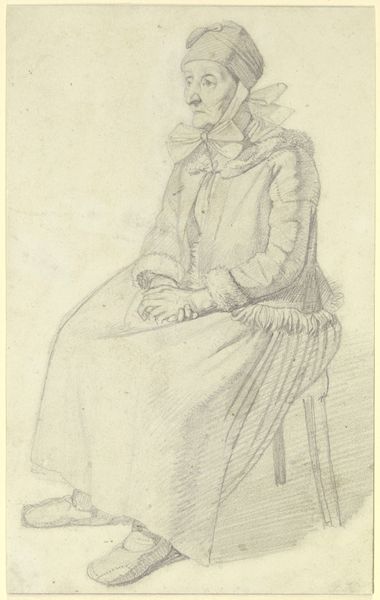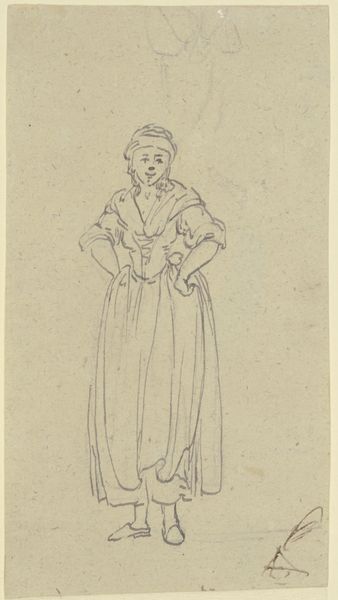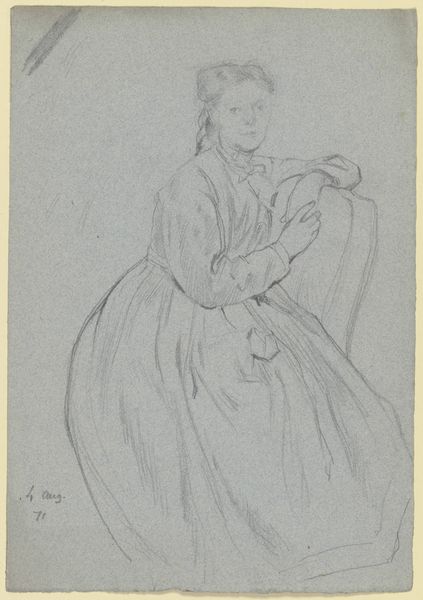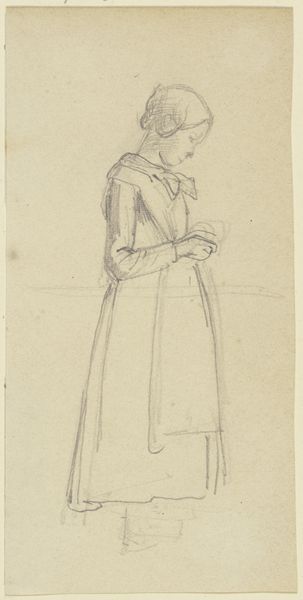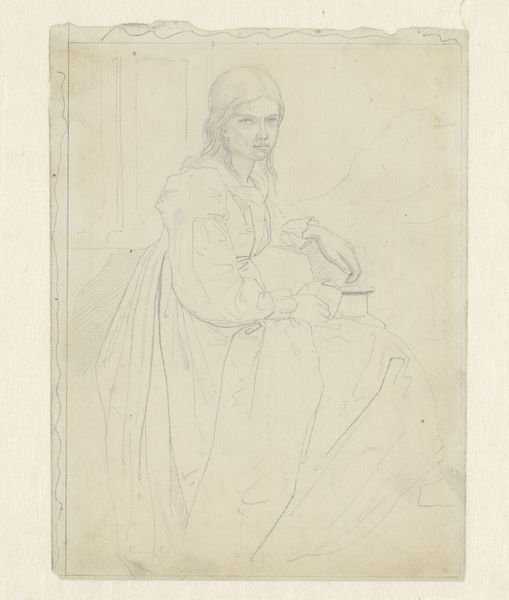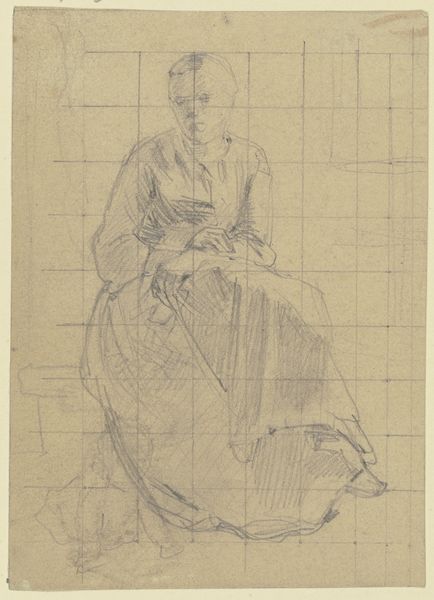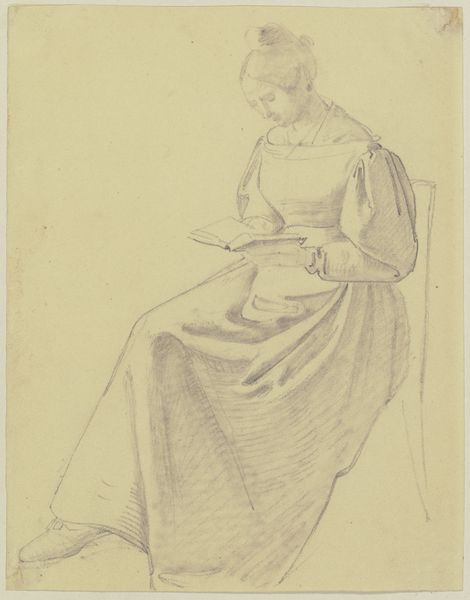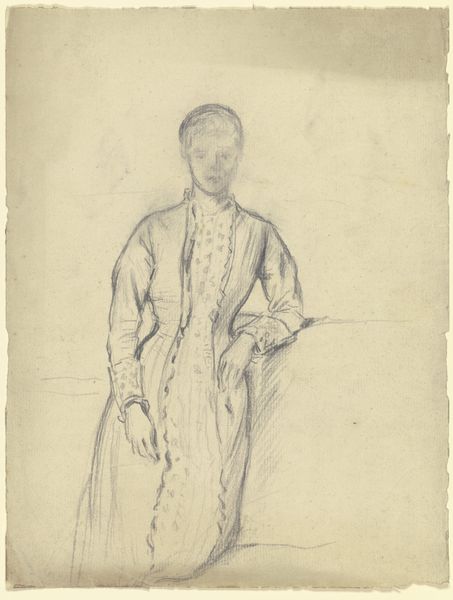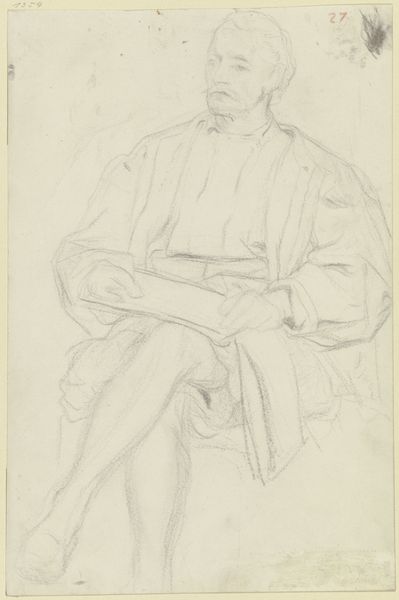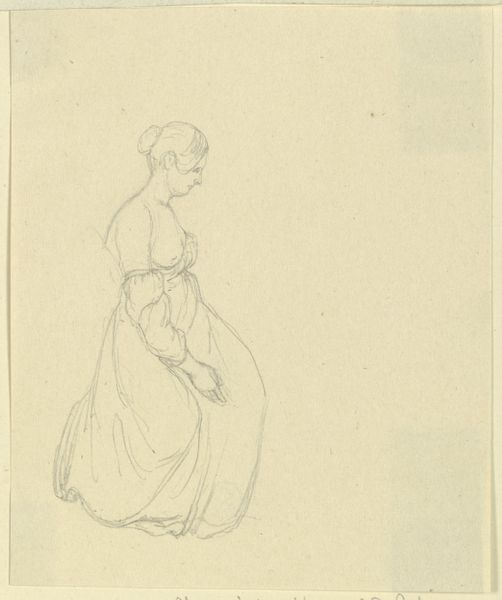
drawing, paper, pencil
portrait
drawing
paper
pencil
Copyright: Public Domain
Curator: Here we have "Sitting lade with fan" by Otto Scholderer, a drawing rendered with pencil on paper. It’s currently held in the Städel Museum collection. Editor: My first impression is one of quiet observation, there’s something incredibly intimate in this portrait of a woman calmly seated. It's so simply rendered, all in monochrome, that I wonder if it might almost capture an introverted state of mind. Curator: It's fascinating to see Scholderer working in this medium; he primarily focused on paintings. A pencil drawing like this brings us closer to the artist's hand, highlighting the raw materials and his method of applying the graphite to the paper. You see every stroke that gives her form. Editor: Right, and if we think about the position of women in portraiture in art historical terms, her passivity here invites scrutiny, doesn’t it? I can’t help wondering about the lack of contextual information on her, did she commission the piece herself? Who might she have been within a society where such portrayals often objectified women's roles. Curator: True, but it’s interesting to consider the production of such a preliminary work, its apparent lack of finish perhaps speaks to a preparatory sketch where material expression and raw design are foremost. Look at how the chair is barely represented. Editor: You are right to focus on this sketch-like effect. Her almost anonymous appearance gives it a universal dimension: a poised posture becomes the subject for scrutiny as much as the representation of this individual is the focus. I almost wish it was possible to explore the museum archives of preparatory pieces like this and consider how portraits might construct an aspirational self that serves societal gender norms. Curator: That's an excellent point to bring up; thinking about how a quickly worked drawing can both reveal artistic processes, and conceal some of the social relations at the time, shows its continued importance and how this impacts reception. Editor: Precisely. It’s always crucial to reflect upon the underlying forces when confronting representations of identity. I'm glad this portrait invited that kind of inquiry. Curator: Me too, thinking about Scholderer's work makes me keen to find other similar drawings to look at them as artifacts that highlight an often-overlooked area of artistic work.
Comments
No comments
Be the first to comment and join the conversation on the ultimate creative platform.
